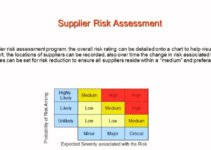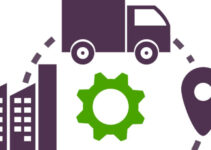It is difficult for various businesses and companies to manage their reverse logistical processes. The supply chain networks of companies are only supposed to work forward, and not backward to bring back things. Online shopping trends have made things so much easier and more convenient, and customers want an easy return process. Today, we’ll discuss the 5Rs of reverse logistics with examples; its definition, and the 5Rs with examples.
What is Reverse Logistics?
Reverse logistics is the method of dealing with reverse supply chain processes. It means that products move in a backward direction from customers to the supplier, warehouse, and manufacturer. However, the reversal process starts when customers plan to return the purchased product for replacement, repair, credit, or refund. It also comprises those customers who want to return their goods for repair, resale, or recycling to receive credit on the new purchases.
Significance of Reverse Logistics
Businesses and companies employ reverse logistical processes at the mass scale with the objective of earning the loyalty of customers by gaining value from the returned goods. The growth of e-commerce platforms has amplified the value and worth of returned goods to trillions of dollars. Customers return approximately 30% of the online sold items; the return rate of the in-store sold products is 10%.
Businesses are transforming their operation relevant to how customers perceive waste. People would like to shop from such companies that offer them an easy-return process. Customers care about the environment and they don’t want their products to cause landfill waste.
However, when products are moving backward in the supply chain, the company has to determine how to manage its goods and products.
5Rs of Reverse Logistics with Examples
Let’s discuss the 5Rs of reverse logistics are as follows;
Return
When it comes to managing the return and exchange in the best way, it is significant that you should avoid them in the first place. You can do so by taking the following steps;
- Selling high-quality products
- Clearly explaining product description
- No wrong shipment of goods
- Avoiding product damage during shipment or storage
If you have taken all the precautionary steps to avoid returns or exchanges; it is significant that you should offer them an easy-return method when it comes to it. The scope and size of business operations are different for various companies, and you should establish an easy return policy. The objective is to satisfy the needs and wishes of customers against the cost attached to the returned goods.
Example – Amazon
Amazon is the world’s leading e-commerce platform. The company has a very open and liberal return policy, unlike many other return policies. It allows customers to return their goods at the dropping center, or the company’s logistician would pick it up at the customer’s doorstep depending on their convenience.
Reselling
If one customer doesn’t want your product, then it doesn’t mean that it won’t serve the needs of other customers. Companies should have a return policy for reselling the returned products. The annual worth of the resale market in the US is roundabout 15 billion dollars. Many companies are taking advantage of this opportunity and earning millions of dollars of profit.
Most of the products that customers return are because they don’t satisfy them, and it doesn’t mean that they’re faulty or defective. The company tests and analyzes the returned items, and repackages, and sends them to the inventory for reselling.
Example – Apple
Apple is a world’s tech giant company and it is also employing the reverse logistical methods. Apple allows its customers to return the used products to the company and receive discounts on the new products. However, the company repairs the returned products, and resells them again; or employs their parts in the repairing of other devices.
Repair
Some customers want their damaged goods repaired or fixed, rather than wanting a replacement or returning their goods. If customers don’t want their product back, then it also reduces the cost of repairing and returning shipments. Companies should have a separate repair unit, where they can easily test, repair, and send them back to the market.
If there is a small problem in the product, then could sell it as reconditioned or like-new. The company could repair the damaged products and offer discounts on the defective products.
Example – Zara
Zara is the world’s leading fashion designing brand, and the company allows its customers to return used clothes back to the company for repair and repurposing. The company repairs the returned products or uses the material in the production of other products.
Replace
Some customers return their product for replacement because they want the same product but with a different version. For instance, the shoes or dress were too tight or loose, and they wanted another shade of the color or fitting of the shoes. Often, the small exchange of products improves the overall experience of the customers, and it amplifies the customer retention ratio.
Example – Zappos
Zappos has a very efficient product replacement process; the company receives the notification as soon as the customer applies for replacement. It is possible for the company due to its robust WMS, and it allows the company to efficiently track the incoming and outgoing products.
Recycle
Customers want their favorite brand to make sustainable methods of production and disposal. That’s why businesses and companies are employing sustainable practices. McKinsey’s research study showed that the focus of every 1 in 4 customers is on the environment, and they keep it in mind while shopping.
Example – Proctor & Gamble / PepsiCo
Companies like P&G and Pepsi are efficiently employing recycling methods; they are reusing the packaging material that customers have returned. They work with such partners that would collect the used packaging and material and bring it back to the company’s warehouse for reuse.
Conclusion: 5Rs of Reverse Logistics With Examples
After an in-depth study of the 5Rs of reverse logistics with examples; we have realized that the reverse logistical process is highly significant for modern businesses and companies. If you are learning about the 5Rs of the reverse logistical process, then you should keep in mind the abovementioned elements with examples.
Ahsan is an accomplished researcher and has a deep insight in worldly life affairs. He goes Live 3 days a week on various social media platforms. Other than research writing, he’s a very interesting person.


